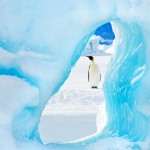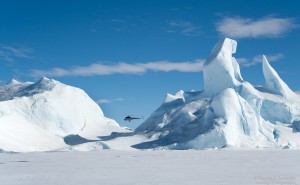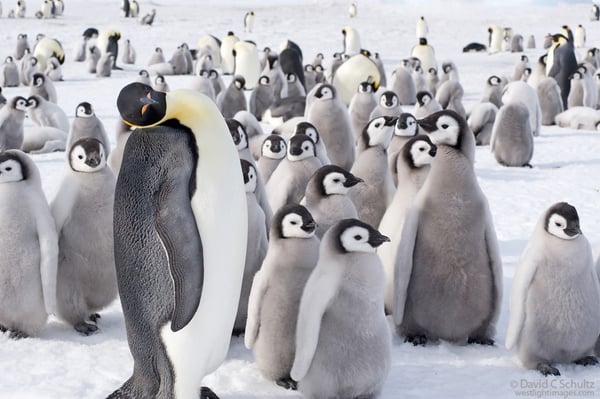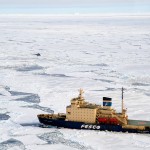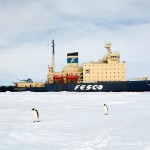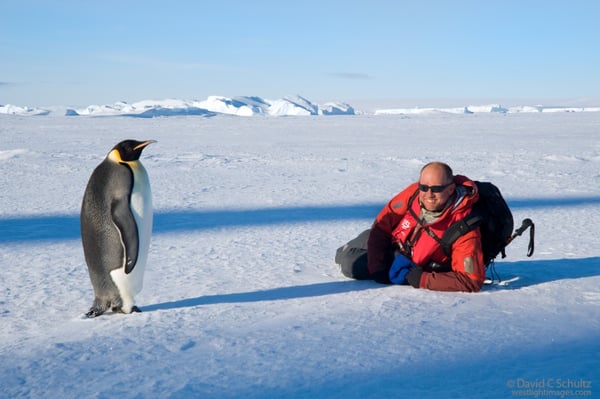Getting to Snow Hill: Part II
David Schultz is an amazing photographer who lacks a fear of polar bears and frostbite. He provides photographic tours in both the North and South Poles where his landscape photographic talents shine as white as…snow. We’ve had the pleasure of seeing much of his work over the years here at Really Right Stuff and consider it an honor to show and tell a behind the scenes look into one of his more memorable Antarctic trips. Here is the second piece to David Schultz’s Snow Hill Island II, his full trip to the Antarctic and how some rather unpleasant complications almost prevented his adventure to capture the flightless birds.
So Close, Yet So Far Away
I started to regain conciseness, first noticing vaguely recognizable shapes hovering around as a bright light shown directly in my face making everything very ghostly in appearance. Next thing I recall is the intense icy cold feeling running up my spine. This turned out to be caused by the bare steel table in the medical bay, the cold emphasized by the fact that I was drenched in sweat. Something, someone was holding me down as I felt a sharp painful jab into the arm, then another, then into the hand. With no idea at first where I was, what had happened, and unable to understand anything being said I slowly blacked out once again. It was about 2am on day four aboard a Russian icebreaker in the Weddell Sea of Antarctica.
I awoke again later that morning, still freezing, IV stuck in the top of my hand and a bit dazed but able now to understand the where and why of my situation. Forty years earlier I’d been diagnosed with Type 1 diabetes and for all that time and under much more stressful situations I had avoided going into insulin shock but my luck ran out that previous evening. Boy was I pissed! Of all times, like anytime is a good one, for this to happen. Then came the bad news. The ship doc decided it was not safe for me to head out on the ice for what was supposed to be my first day photographing Emperor penguins, the main reason I was here.
Breakfast was served followed by another safety briefing then shortly afterwards the helicopters started to lift off taking a load of passengers on a ten mile flight above the sea ice to the base camp. I tried to make the best of being left behind, videotaping and photographing the two aircraft as they slowly landed on then once again departed the aft deck. By any measure it was an incredibly beautiful day, no wind, calm open ocean behind us, warm temperatures, for Antarctica, and intensely blue skies. This was my sixth voyage to “the ice” and with that came the knowledge of how rare this is and how quickly and dramatically this could all change. All the more reason to be miserable about my predicament.
Close Encounters
Of the Bird Kind
Day five and with the docs blessings I was allowed to join the rest of the crew for what became the first of five days on the frozen sea, hanging out for hours with what I believe to be one of the most beautiful birds on the planet. OK, so they can’t fly or walk worth a damn, they poop everywhere and not once did they listen to my directions but still, what colors, textures, lines and what a setting!
The heli slowly left the ship and immediately I began shooting. First came images of the icebreaker wedged into the fast ice then wide angle shots which showed not only the frozen sea but the mammoth icebergs which had become trapped as winter arrived. From the air it’s difficult to ascertain the height of the bergs but experiencing the scene from the air gave me a new and appreciated perspective. All too quickly we made our approach to base camp. We circled low and close to a forty foot tall dagger shaped chunk of ice at the bottom of which two brightly colored tents stood out like beacons, the only color other than blue and white for as far as you could see.
From camp it was about a two mile hike across the ice to reach the penguin rookeries which were scattered around the relative protection of icebergs. A route was marked by bright red flags, avoiding areas where the ice had cracked and where one might find themselves wet, cold and grateful that their equipment was insured should they take a polar plunge. In the mostly white on white conditions it’s easy to lose your sense of direction too, especially when the wind whips up the extremely fine snow.
Article written by David Schultz, Owner of West Light Images

